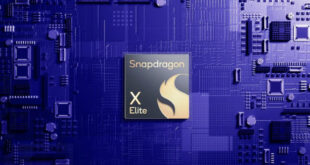
If you’ve been interested in Intel’s new Alder Lake platform but have been waiting for the company to launch its mainstream parts, we have good news. The chip giant took the lid off its mainstream Alder Lake family at CES this year, from the Core i9-12900 all the way down to some basic Celeron options.
Higher-end chips get a lot of attention but its lower-end and mainstream processors are the ones that actually ship in significant volumes. Because Alder Lake is a brand-new architecture for Intel, with a mixture of high-efficiency and high-performance cores, there are some comparative differences between how 11th Gen and 12th Gen CPUs stack up against each other.
Intel’s 12th Gen Core i9 CPUs all feature 8+8 cores (8 high performance, 8 high efficiency). Core i9 owners from previous generations gain the advantages of Alder Lake’s higher IPC as well as the addition of all eight efficiency cores. Core i7 customers currently using 8th Gen – 11th Gen CPUs will pick up between 0-2 high performance cores and four efficiency cores for background task offloading.

There’s a split in the Core i5 family worth noting. The Core i5-12600K and 12600KF both offer six high performance cores and four efficiency cores, while all other members of the Core i5 family are 6+0 configurations. While the efficiency cores are not as fast as Alder Lake’s high-performance cores, the extra performance offered by the 12600K might put it well ahead of the 12600 — possibly enough to justify the higher price ($289 versus $223). That’s not a guarantee, but we’d expect a larger gap between the 12600K and 12600, as well as between the 12600K and the 11600K.

After the 12600K family, there are no more efficiency cores in the Alder Lake lineup, and chip parts waterfall down to the Core i3. The Core i3-12100 is a 4+0 CPU with a 3.3GHz base clock and a 4.3GHz boost clock. Compared to the Core i3-10100, the 12100 offers the same 4C/8T configuration but a 300MHz lower base frequency (3.3GHz versus 3.6GHz). The lower base frequency should be canceled out by Alder Lake’s IPC improvements over Intel’s old Skylake architecture, and the Core i3-12100 offers 12MB of L3, up from 6MB on the 10100. That feature should also be good for some additional performance, but probably not enough to make a low-end upgrade from 10th Gen to 12th Gen worthwhile. We suspect lower-end customers from 5th, 6th, and 7th Gen platforms would see much better gains from stepping up to 12th Gen, since Core i3 CPUs from these families are 2C/4T chips.
Separately from its large Alder Lake launch, Intel announced a new, ultra-high-end CPU: The Alder Lake Core i9-12900KS. This 8+8 CPU will feature a 5.5GHz maximum clock speed and an all-core boost of 5.2GHz. The latter is more impressive than the former. Single-core boost clocks are all but meaningless in an age when most applications are at least dual-threaded. An all-core 5.2GHz boost implies that customers should see at least that speed under full load.
But — as impressive as a 5.2GHz all-core boost is — it’s also just four percent faster than the 12900K’s 5GHz all-core boost. Maximum single-threaded clock goes up a bit more, with a six percent increase.
There’s nothing wrong with wanting to own the fastest CPU of a given generation, even if the price/performance curve doesn’t favor enthusiasts at the top of the stack, but limited frequency headroom above 5GHz is a fundamental fact of modern silicon and a problem no foundry has managed to solve. Intel’s ability to hit 5.2GHz on all-core boost is both a legitimate achievement and a reminder of how difficult it is for chip designers to offer meaningful clock improvements given modern manufacturing constraints.
Intel’s plans for mobile Alder Lake are very interesting for what they say about the relationship between CPU power consumption and the company’s high-performance cores versus its high-efficiency cores.
The performance world, according to Intel. Rankings are based on the C++ benchmarks in SPEC 2017. Intel and AMD executables were compiled with ICC, the M1 executable was compiled with XCode 13.1.
With 11th Gen, Intel made good on its promise to launch eight-core Tiger Lake CPUs based on the Willow Cove architecture (11th Gen for Intel is mostly 14nm Rocket Lake on desktop and 10nm Tiger Lake in mobile). These 8-core chips are mostly Core i9 CPUs, but there are a pair of Core i7 options. The rest of the mobile 11th Gen Core i7 CPUs are quad-cores, with one 6-core / 12-thread variant (11600H). 11th Gen Core i5 CPUs are split between 6C/12T and 4C/8T configurations.
In the highest power envelopes, Intel’s 12th Gen replacement strategy for mobile looks a lot like it does on the desktop.

The Core i9-12900HK offers a 6P/8E configuration, compared to 8P/8E on desktop for the Core i9-12900K. That’s not much of a difference. By the time we hit the Core i5-12600H, however, we’re at 4P / 8E in mobile, compared to 6P/4E in desktop.

The Core i5-11500H is a 6C/12T CPU with a 2.9GHz base clock and a 4.6GHz boost clock in a 45W TDP. The Core i5-12500H is 4P/8E, which works out to 12C/16T with a base clock of 2.5GHz on its performance cores and 1.8GHz on E-cores. Maximum turbo frequencies are 4.5GHz and 3.3GHz, respectively.

As TDP falls, CPU product configurations change more between 11th and 12th Gen. The most appropriate comparison for the 15W Core i7-1265U is the Core i7-1165G7. The 1165G7 is a 4C/8T CPU based on Tiger Lake. The 1265U is a 2P/8E (10C/12T) CPU.
It’s difficult to guess at how this shift will impact overall performance because Intel’s P-cores and E-cores have different frequency ranges, and we don’t know how the limit of a 15W TDP will impact sustained performance. Best-case, we’ll see chips like the Core i7-1265U take a leadership position over the Core i7-1165G7. This outcome assumes that Intel hits notably better efficiency on its E-cores and that a large, slower-clocked E-core cluster more than compensates for the loss of two performance cores. This, in turn, depends on the thermal characteristics of the CPU under load.

Intel’s Core i3-1110G4 is a 2C/4T CPU with a 7W and a 15W configuration option available and a base clock between 1.5GHz (7W) and 2.5GHz (15W) with a maximum turbo of 3.9GHz. The Core i3-1210U is a 6C/8T chip (2P/4E) with base frequencies of 1GHz on its P-cores and 700MHz on its E-cores. Maximum turbo frequencies on this 9W core are 4.4GHz and 3.3GHz, respectively.
Looking at these numbers, there’s a chance that at least the lower-end mobile Core i3 / Core i5 CPUs will offer substantial uplift in similar TDP brackets to Intel’s older mobile products. Everything depends on what kind of frequencies chips like the Core i3-1210U can maintain against their older siblings.
There is some historical reason to be optimistic. When Intel finally bumped up its mobile core counts back in 2017, the performance improvement from 8th Gen was substantial, even in the same TDP envelope. Intel sharply cut base clocks on its quad-core mobile chips to keep them in the same TDP brackets as its dual-core / quad-threaded CPUs from 7th Gen and earlier, but these on-paper declines in base frequency weren’t a sign of problems as far as overall performance and battery life were concerned.
Intel’s 12th Gen mobile CPUs will deploy fewer performance cores and more efficiency cores, and this may be key to improving overall performance in lower power envelopes. We’ll know more when silicon ships later this year.
Now Read:
Subscribe Today to get the latest ExtremeTech news delivered right to your inbox.
© 1996-2022 Ziff Davis, LLC. PCMag Digital Group
ExtremeTech is among the federally registered trademarks of
Ziff Davis, LLC and may not be used by third parties without explicit permission.
We strongly encourage you to read our updated PRIVACY POLICY and COOKIE POLICY.
 #Bizwhiznetwork.com Innovation ΛI |Technology News
#Bizwhiznetwork.com Innovation ΛI |Technology News



